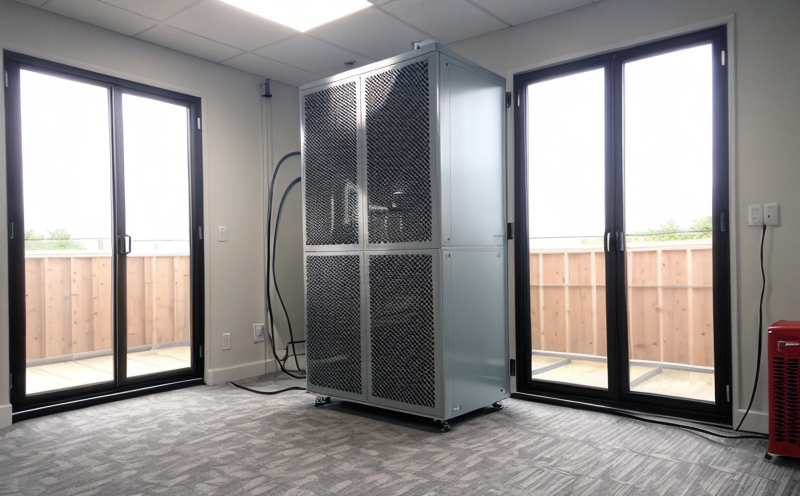EN 13779 Ventilation System Flow Measurement
The EN 13779 standard is crucial in ensuring that ventilation systems meet the required airflow specifications for optimal health and environmental conditions. This testing service focuses on measuring the air flow through various components of a ventilation system to ensure they operate within specified limits as per this European Standard.
EN 13779 specifies methods for measuring the flow rates in ductwork, diffusers, grilles, and other fittings that are part of the ventilation system. It applies to HVAC systems used in buildings where the air quality is critical, such as hospitals, schools, offices, and shopping centers.
The testing process involves several steps to ensure accuracy and reliability. The first step is to prepare the test section by ensuring there are no obstructions that could affect airflow measurement. The next step is to select appropriate measuring instruments compatible with the system being tested. Commonly used devices include pitot tubes, anemometers, and differential pressure sensors.
The flow rate measurements are taken at different points along the ventilation ducts or around diffusers and grilles. These readings help determine if the actual airflow is within the tolerance levels specified by EN 13779. The results provide insights into whether the system is functioning optimally and can identify areas needing improvement.
Understanding the application of this standard requires knowledge of its key components. For instance, section 4 provides detailed instructions on how to conduct the tests, including the necessary equipment and procedures. Section 5 outlines acceptance criteria based on which the results are evaluated to determine compliance with EN 13779.
For quality managers, this service ensures that their facilities comply with industry standards, thereby maintaining a healthy indoor environment for occupants. Compliance officers will find it essential in avoiding potential legal issues associated with non-compliance. R&D engineers can benefit from precise measurements to refine designs and improve efficiency. Procurement teams can ensure they are purchasing equipment that meets these stringent requirements.
| Standard | Description |
|---|---|
| EN 13779:2005 | Methods of measuring flow rates in ducted ventilation systems. |
| ISO/IEC 8466-1 | Guidelines for the calibration and verification of differential pressure meters. |
Why It Matters
The importance of EN 13779 cannot be overstated in maintaining a safe and healthy indoor environment. Proper ventilation ensures that the air quality inside buildings is maintained at optimal levels, which directly impacts the health and well-being of occupants.
- Airflow measurement helps detect potential issues early on, allowing for timely corrective actions to prevent further deterioration.
- Ensures compliance with local and international regulations, thereby reducing legal risks associated with non-compliance.
- Promotes energy efficiency by identifying areas where improvements can be made, leading to cost savings over time.
Failing to meet the requirements set forth in EN 13779 could lead to poor indoor air quality, which has been linked to various health problems like allergies and asthma. It also affects productivity levels due to discomfort caused by insufficient ventilation or excessive heat. Therefore, adhering to this standard is not just a legal requirement but also an ethical responsibility towards the health of building occupants.





